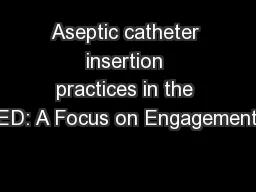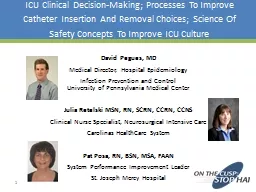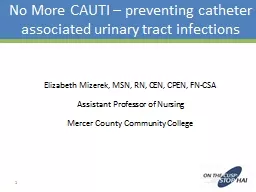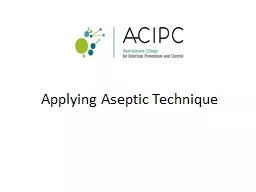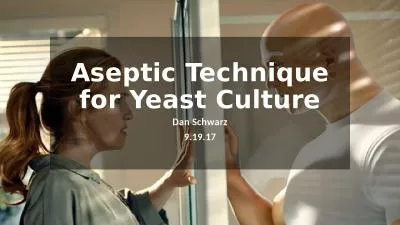PPT-Aseptic catheter insertion practices in the ED: A Focus on Engagement
Author : trish-goza | Published Date : 2018-11-07
Milisa Manojlovich PhD RN CCRN Associate Professor University of Michigan School of Nursing 1 Learning Objectives Discuss barriers to ED staff engagement Describe
Presentation Embed Code
Download Presentation
Download Presentation The PPT/PDF document "Aseptic catheter insertion practices in ..." is the property of its rightful owner. Permission is granted to download and print the materials on this website for personal, non-commercial use only, and to display it on your personal computer provided you do not modify the materials and that you retain all copyright notices contained in the materials. By downloading content from our website, you accept the terms of this agreement.
Aseptic catheter insertion practices in the ED: A Focus on Engagement: Transcript
Download Rules Of Document
"Aseptic catheter insertion practices in the ED: A Focus on Engagement"The content belongs to its owner. You may download and print it for personal use, without modification, and keep all copyright notices. By downloading, you agree to these terms.
Related Documents

